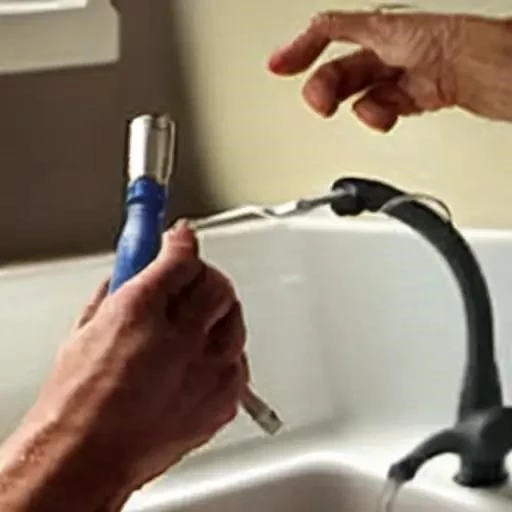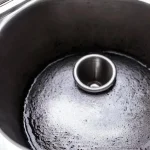In the evolving landscape of home aesthetics and functional design, the kitchen often stands as the beating heart of any residence. Yet, for many, an overlooked detail can cast a literal shadow over this vital space: outdated or inefficient kitchen sink light fixtures. These seemingly minor components, often installed decades ago, can subtly detract from both the visual appeal and practical utility of one of your home’s most frequented areas. Imagine a future where your culinary endeavors are illuminated by crisp, energy-efficient light, where preparing meals becomes a joyous, brightly lit experience, and where your kitchen truly shines with modern elegance.
The prospect of replacing electrical fixtures might initially seem daunting, evoking images of complex wiring diagrams and professional intervention. However, empowering yourself with the right knowledge and a methodical approach transforms this perceived challenge into an incredibly rewarding DIY project. By thoughtfully preparing and meticulously following safety protocols, homeowners can confidently embark on a journey to revitalize their kitchen’s ambiance, dramatically enhancing both its functionality and its contemporary charm. This isn’t merely about changing a bulb; it’s about embracing a brighter, more efficient, and aesthetically superior future for your cherished kitchen space.
Essential Preparations for Fixture Removal
| Category | Information | Details/Reference |
|---|---|---|
| Safety First | Always disconnect power to prevent electrical shock. | Locate your main breaker panel and switch off the circuit breaker controlling the kitchen lighting. Confirm power is off using a non-contact voltage tester. |
| Required Tools | Gather all necessary equipment before starting. | Screwdrivers (Phillips and flathead), wire strippers/cutters, non-contact voltage tester, ladder/step stool, safety glasses, work gloves. |
| Fixture Assessment | Understand the type of fixture you’re removing. | Is it recessed, surface-mounted, or pendant? This dictates the initial removal steps. |
| Disposal/Recycling | Plan for environmentally responsible disposal of old fixtures. | Check local regulations for metal recycling or hazardous waste disposal, especially if fixtures contain mercury (e.g., some fluorescent tubes). |
| Reference Link | For comprehensive electrical safety guidelines. | National Fire Protection Association (NFPA) Electrical Safety |
The Step-by-Step Path to a Brighter Kitchen
Once your safety precautions are firmly in place, and your arsenal of tools is neatly arranged, the actual removal process unfolds with surprising simplicity. Think of it as carefully dissecting an old puzzle, each piece revealing the next step towards a grander picture. Lighting professionals frequently emphasize the critical importance of a meticulous approach, ensuring that every connection is handled with precision and care, minimizing any potential for future complications. This isn’t just a practical task; it’s an act of deliberate creation, paving the way for a stunning transformation.
- Power Down: Your Primary Directive
This cannot be overstated. Before touching any part of the fixture, head to your electrical panel and switch off the circuit breaker that supplies power to your kitchen lights. A non-contact voltage tester should then be used to confirm absolutely no current is flowing to the fixture. This crucial step safeguards against accidental shocks, ensuring your personal safety throughout the entire process.
- Accessing the Fixture and Its Canopy
Most kitchen sink light fixtures are attached to the ceiling or wall by a decorative canopy or base plate, concealing the electrical connections. Carefully remove any glass shades, diffusers, or bulbs. Then, locate the screws, nuts, or clips holding the canopy in place. These might be small, so having a magnetic-tipped screwdriver can be incredibly effective, preventing dropped fasteners.
- Disconnecting the Wiring: A Delicate Operation
With the canopy gently lowered, you’ll expose the electrical box and the fixture’s wiring. You’ll typically find three wires: a black (hot), a white (neutral), and a bare copper or green (ground). These are usually connected to the house wiring with plastic wire nuts. Twist the wire nuts counter-clockwise to remove them, carefully separating the corresponding wires. Always remember the color coding: black to black, white to white, and ground to ground. Taking a quick photo before disconnecting can serve as an invaluable reference for future reinstallation or for connecting a new fixture.
- Removing the Mounting Hardware
After the wires are safely disconnected, the final step involves removing the mounting bracket or strap that secures the fixture to the electrical box. This usually entails unscrewing a few screws. Once these are removed, the old fixture can be gently lowered and set aside; Inspect the electrical box for any signs of damage or wear, ensuring it’s clean and ready for a new installation.
Beyond Removal: Envisioning a Brighter Future
The act of removing an old light fixture is far more than just a repair; it’s a strategic opening for innovation and upgrade. Industry leaders consistently highlight the profound impact modern lighting solutions, particularly LED technology, have on both energy consumption and overall aesthetics. By integrating insights from contemporary design trends, homeowners are increasingly opting for sleek, under-cabinet lighting, stylish pendant lights, or even smart lighting systems that adapt to mood and task. The possibilities are virtually limitless, transforming a once overlooked area into a vibrant, functional centerpiece.
Consider the dramatic shift from dim, single-point illumination to a layered lighting scheme that enhances every facet of your kitchen. Expert opinions converge on the idea that thoughtful lighting design can elevate a kitchen from merely functional to truly extraordinary. Energy-efficient LED fixtures, for instance, not only reduce utility bills but also offer superior light quality, often mimicking natural daylight, which is incredibly beneficial for task-oriented areas like the sink. This forward-looking perspective encourages us to view every removal as an opportunity for profound enhancement, promising a future where your kitchen is not just well-lit, but brilliantly inspired.
Successfully removing your old kitchen sink light fixtures is a testament to your growing confidence as a homeowner and a significant step towards a more modern, energy-efficient, and aesthetically pleasing kitchen. This process, while seemingly intricate, is remarkably straightforward when approached with patience and a commitment to safety. You’re not merely replacing a fixture; you’re actively participating in the evolution of your living space, shaping it to better serve your needs and reflect your personal style.
Embrace this opportunity to infuse new life into your kitchen, transforming it into a beacon of modern design and efficiency. The future of your home’s lighting is literally in your hands, promising not just brighter illumination, but a more inviting, functional, and beautiful environment for years to come. Step confidently into this brighter future, knowing you’ve illuminated your potential as a skilled and resourceful homeowner.






